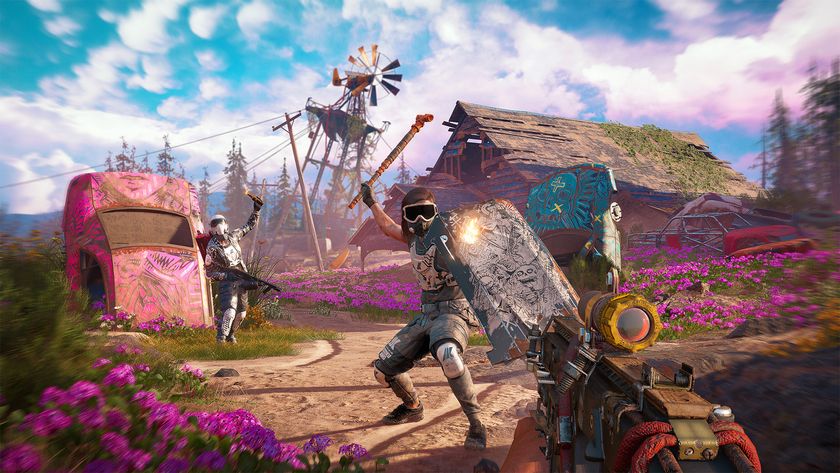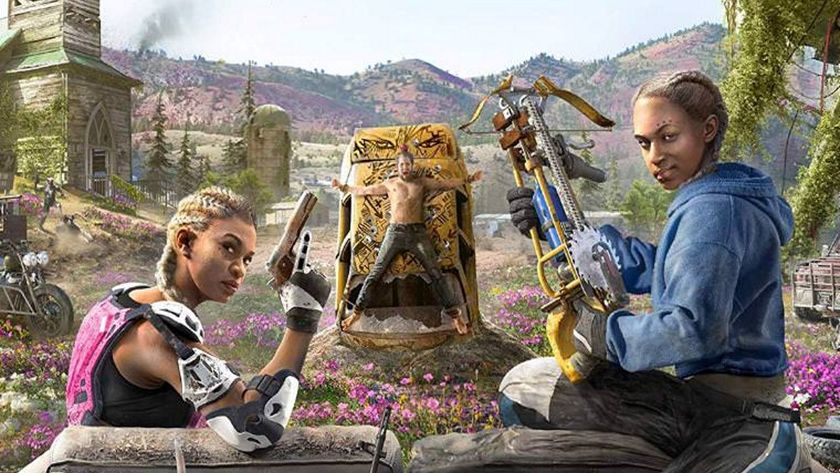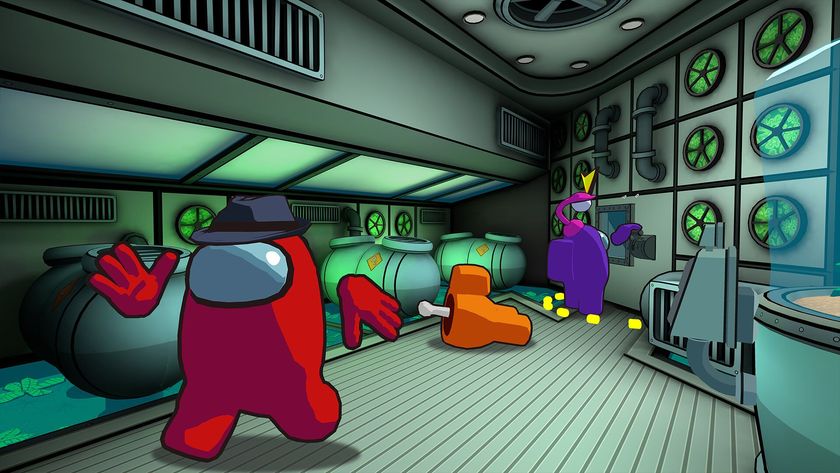Far Cry 6 is another great chaos simulator cherry-picking the series' best bits
Ubisoft's open world anarchy never seem to get old
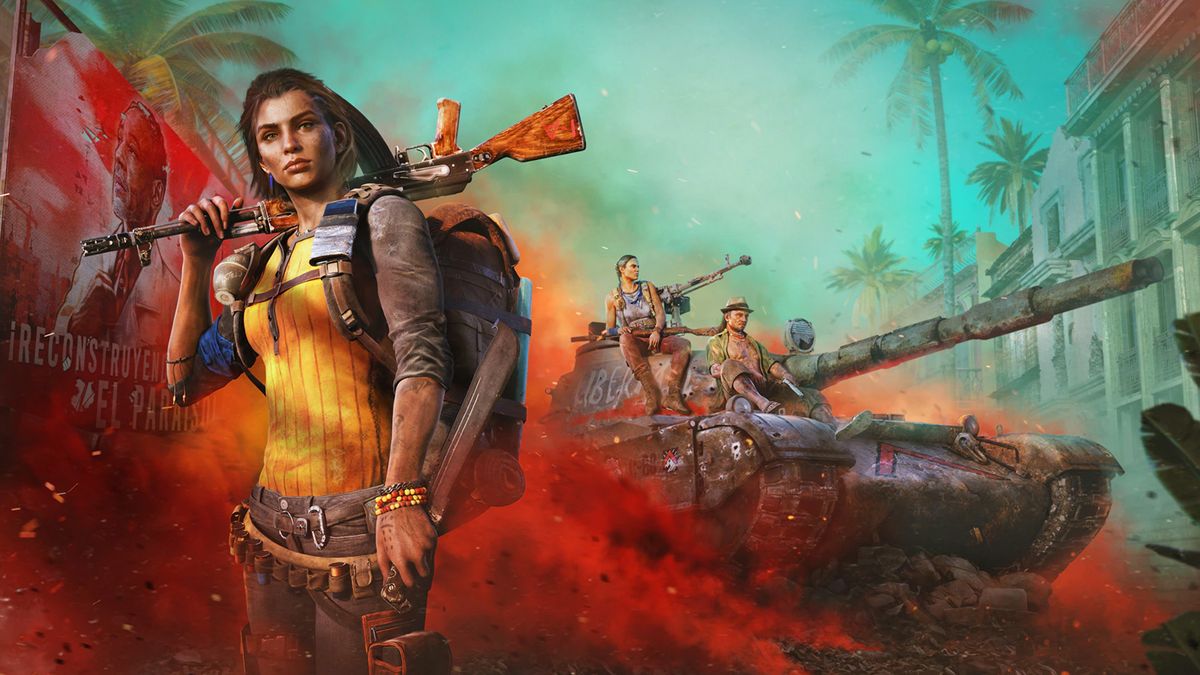
Thank God Ubisoft admitted that Far Cry 6 is political. Within moments of starting, police are rounding up and abusing people for being 'fake' and oh my Christ how is this more symbolic of America than the game they actually set in America. The game itself is really enjoyable, yes, I'll get to that, but the riffing on the idea that people opposed to the Island of Yara's El Presidente are 'fake Yarans', and only 'true Yarans' (ie those on his side) deserve to be treated normally is almost impossible to ignore. Even in the middle of a gun fight, with mortar bombs raining down around me, I'll get pulled out the moment the second I hear a TV interview with Giancarlo Esposito's Anton Castillo saying 'fake Yarans' are the problem. I'll be creeping through town and hear guards discussing 'fake Yarans' like they're a lower caste. It's one word, but it pops out of the background noise every time I hear it.
Island playground
Okay, okay, I'll get back to all that later, because what most people who get upset by mention of real world stuff in their shooty boom games seem to forget is that political inflections don't stop things being fun. And Far Cry 6 is great fun. I played about six hours and just rolled from one chaotic mission to the next; blowing stuff up, sending a weaponised rooster to attack guards, blowing more stuff up, and stealing helicopters. It's the kind of game that's all distraction all the time – where you flit from one shiny interesting thing to the next like an anarchic magpie that never quite reaches its intended destination. Every time I play a Far Cry game I wonder if the series' iterative formula has one more go in it. And, every time, it takes me just minutes to forget that I ever doubted it.

A new location, some fun characters, and the general tone freshen up that familiar formula. After Far Cry 5's slightly more earnest approach rubbed slightly against some of its more comedic missions, Far Cry 6 seems to have embraced a lighter, more summer action movie feel. Giancarlo Esposito is a deliciously threatening foil, deadpanning his way through casual genocide and death sentences, while the team of guerillas you fall in with are a lovable band of rogues, quipping and wisecracking as they guide you through deposing El Presidente. It's a game that deals with the systematic oppression of an entire country's population; but also one where you can take companions into battle like a disabled Weiner dog on wheels, or a metal-spurred murder chicken. That's… not an easy tone to get right, but Far Cry 6 seems to hit the right stride from what we've seen of it so far.
The first main character you meet, Juan, is an ex-CIA spymaster who builds all of the weird weapons Far Cry 6 equips you with. He's basically like James Bond's Q, if all Q had access to was a dumpster and a hot-glue gun. He's also a perfect cigar-chewing cynical old soak to lead you into your mission - a sort of part weary, part wise, has-been guide that's done it all before. That young/old dynamic is reflected elsewhere in the game too. There are two teams of guerillas – the old freedom fighters from a previous revolution who are still fighting, and a younger generation standing up to Castillo for the first time. The former group are wiser, aware of the costs of war, and clash against the brasher younger groups eager to rush in and become heroes. Even bad guy Castillo is dealing with generational issues – Diago, his young son, seems less than into the whole idea of becoming despot junior.
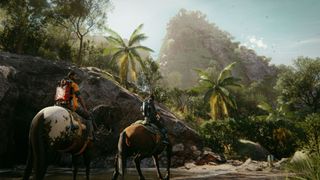
Sneaky sneaky
The basic action is very, very Far Cry – sneaking into bases to try and stealthily take out guards, disabling alarms, and then inevitably messing it up and shooting everything until the shouting stops. The jungle and predominant red accents of the Yaran soldiers colour schemes gives everything a bit of a Far Cry 3 vibe, and overall everything definitely harks back to the third and forth games. Yara isn't quite as wilderness heavy as Far Cry 3's Rook Island or Far Cry 4's Kyrat, but not quite as modern as Far Cry 5's Hope County – its mix of jungles and mountains, cities, and organised military presence pitches it somewhere between the two ends of the spectrum. In fact, this instalment feels like it's cherry picked from the series history. The bases and soldiers have a Far Cry 3 and 4 feel to them, while the way checkpoints dominate Yara's system of roads harkens back to Far Cry 2 – there's even city areas where you're able to holster your gun, much like Far Cry 2's ceasefire town of Pala.
Speaking of ceasefires, I didn't get too much time to play around with the holster mechanic but it's perhaps one of the most interesting new features in the game. At any point you can simply put your gun away and, assuming you're not standing on a pile of bodies, you largely become a normal, ordinary person. There are numerous cities on the map and the people and soldiers will have opinions if you start walking around with all your guns hanging out. It's an interesting idea that I really hope to see explored fully in the final game. The idea of having large areas where you can basically go undercover is oddly exciting in a series largely about burning the map to ground region by region. I only saw one encounter with repercussions to having your guns on show – meeting a jumpy double agent soldier who doesn't react well to armed approaches.
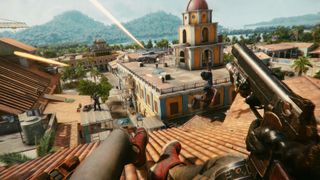
The gunplay, when you unholster whatever you're carrying, is satisfying and chaotic. The guns have a rattly self-made feel, with things like homemade laser pointer red dot sights and so on. There's an interesting change here though where your abilities largely come from your gear. There are perks and abilities attached to weapon mods and armor sets that mean your kit affects your damage, resistances, ammo carrying, and so on. All this comes from collecting resources to upgrade and unlock things, as well as raising your guerilla rank to access more equipment.
Sign up to the 12DOVE Newsletter
Weekly digests, tales from the communities you love, and more
In terms of equipment, Ubi has made a big thing about its special weapons and Supremo backpacks, which are basically an ultimate ability. One of them – which fires a salvo of rockets – is an excellent leveller when you feel overrun. The others – things like a healing option, EMP, or flame burst to clear enemies – didn't immediately grab my attention in the time I had. I also wasn't completely won over by the special guns I got to try. These jerry-rigged contraptions look like cool homemade techno shooters but didn't really seem to stand out when I needed a boost. The only one that felt indispensable was a revolver shotgun which notched into a shield, with its meaty combination of one shots and mobile cover just a joy to unleash.
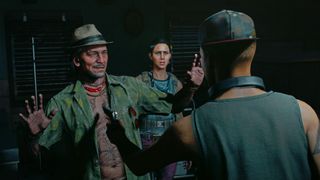
Gun. Play.
I found myself trying a lot of weapon combinations when all hell inevitably broke out, as some of the combat currently feels a little unfairly balanced. It might be a result of being put into a pre-saved game, positioning me a few hours into Far Cry 6 without giving me a chance to get acclimated, but I spend a lot of time absolutely scrambling to survive. When everything goes off, the danger seems to come from 360 degrees and this is the first Far Cry I've played where it felt difficult to manage. The mortars are a big problem here, as they seem to be everywhere. If you can't find and take them out quickly, you'll find yourself dealing with soldiers coming at you from every angle while bombs drop every 30 seconds. As I said, hopefully that's just a result of being dropped cold a way into the campaign, because I'm still having nightmares about the whistling shells.
Despite a few issues, I'm more excited for this than I've been for a Far Cry in a while. It seems, on the face of it, a very similar game to the ones that have come before it, but the story telling, weapon handling, and world feel more engaging than I had anticipated. I got lost in Yara very quickly in a very enjoyable way and I'm keen to see more. And, yes, all that fun can still happen even with political allegories and symbolism in there. It's ridiculous to try and pretend games like this aren't political – if you have a conflict and a story, then you're saying something about it. Read Ubisoft's statement for more on that. It might be less obvious when the tropes and stereotypes are well worn, or the references aren't obvious (For example: Far Cry 4's Pagan Ming is named after a real Burmese king who came to power in 1864 and executed up to 6000 people) but that doesn't stop you enjoying the thing. From the six hours of Far Cry 6 that I played, there's a lot of fun to be had with this tropical chaos simulator and it's going to be entertaining to see how far you can push it.

I'm GamesRadar's Managing Editor for guides, which means I run GamesRadar's guides and tips content. I also write reviews, previews and features, largely about horror, action adventure, FPS and open world games. I previously worked on Kotaku, and the Official PlayStation Magazine and website.
Most Popular




